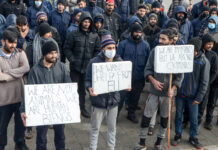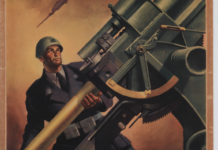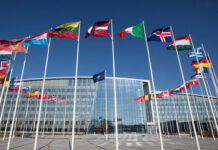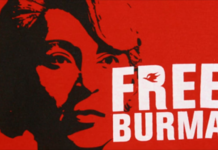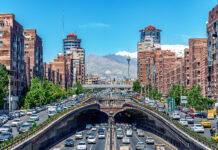Latest developments
At the end of October, a massive attack by the Brotherhood Alliance, composed of three “ethnic” armed groups opposing the Burmese junta, launched the largest military offensive against the coup leaders since February 2021. The offensive led to the conquest of several areas along the border with China, prompting the PRC to urge the junta to negotiate a ceasefire. The action also galvanized the offensive of other resistance groups in different areas. Among the junta’s violence in 2023, the April airstrike in Sagaing stands out, where two thermobaric bombs were dropped, killing 159 civilians. In October 2023, the Assistance Association of Political Prisoners (AAPP) “certified” over 4,000 civilian victims whose names and places of execution are known. However, according to a report by the Peace Research Institute in Oslo, the number of civilians killed in Myanmar in the first 20 months after the military coup on February 1, 2021, would be at least 6,000. According to the Armed Conflict Location & Event Data Project (ACLED), during the period from January to June 2022 alone, the war resulted in over 11,000 casualties and over 6,000 incidents of violence or protest. Since the beginning of the coup, the death toll is estimated to be around 30,000, according to the Burmese NGO, Chin Human Rights Organization. According to a September 2022 report by the international research group, the Special Advisory Council for Myanmar (SAC-M), 330 municipalities in Myanmar, “in just 72 [of the 330 municipalities in Myanmar], the Junta enjoys stable control” – this doesn’t mean that the Tatmadaw (the army) has “effective influence over the population, but simply that its security forces and basic infrastructure do not need to be actively defended.” This area “constitutes only 17% of the country’s surface area.” The report continues: “127 municipalities (39% of the total) are contested,” while “Junta control is contested in 94% of all border municipalities.” At the end of September 2023, the interim leader of the clandestine National Unity Government (NUG) of Myanmar stated that the resistance forces control about 60% of the country’s territory and are ready to challenge the junta in key strongholds. “Now we are in a position to threaten Naypyidaw as well,” interim NUG president Duwa Lashi La told Bloomberg.
What is being fought for
After a brief period of relative democratic stability (although there has always been active resistance against the central state in the peripheries), Myanmar has once again plunged into the darkness of a military coup orchestrated by the army and implemented in February 2021, after the political elections in 2020 had confirmed the victory of Aung San Suu Kyi’s National League for Democracy. Since then, a war has been fought that is poorly illuminated by the media but involves 80% of the territory. Against the military junta, the People’s Defense Forces (PDF) of the clandestine National Unity Government and the Regional Ethnic Organizations (EAO), peripheral armies led by various minority groups in the country, are fighting.
Myanmar’s strategic location makes it a fundamental piece in the Asian domino: for the Chinese, it’s the gateway to the Indian Ocean; for the West, it’s a battleground with Beijing; for Russia, it’s an ally. It’s the perfect scenario to fuel internal tensions by adapting them to external interests, now disrupted by yet another coup. The main actors are both the military and the warlords who manage regional ethnic armies that emerged after the liberation from the United Kingdom in 1948, which saw the failure of Aung San’s (Suu Kyi’s father) unitary dream and the emergence of dozens of autonomous or separatist guerrilla hotspots. The democratic government had attempted to work towards a peace process leading to a federation, but the coup reshuffled the cards.
Country overview
Myanmar, long known as Burma, faces the Andaman Sea in the Bay of Bengal and is part of ASEAN, the Association of Southeast Asian Nations. It has a long history of military dictatorships following Aung San’s democratic experiment, the hero of liberation from the United Kingdom (1948). These dictatorships began in 1962, and only in 2010 did the Burmese military government implement a series of gradual political reforms that led to the release of political opponents, including Aung San Suu Kyi, leader of the National League for Democracy. The first partially free parliamentary elections date back to 2012, but the real turning point was the 2015 consultation: the National League for Democracy obtained the presidency (Win Myint) while Suu Kyi assumed the role of State Counselor (effectively, Prime Minister). In the 2020 elections, the victory of the League was repeated with a stronger majority, but after a long dispute over possible fraud (excluded by international observers), the military seized power in February 2021. Observers cannot explain the Tatmadaw’s decision, which could still rely constitutionally on the Vice Presidency, three key Ministries (Interior, Defense, Border Affairs), the ability to dissolve the legislature, and a quarter of the seats in Parliament. The military also controls and has controlled, through conglomerates and affiliated companies, virtually the entire Burmese economy, both formal and informal.
Understanding Myanmar, formerly known as Burma, is not only complicated politically. For example, comprehending the former Burma is impossible without considering the influence of Theravada Buddhism, one of the Buddhist traditions also prevalent in Thailand, Laos, and Cambodia. The other major tradition is Mahayana, which is practiced in Tibet, Mongolia, China, Japan, and Vietnam. The most profound difference lies in the method of following the Dharma (the teachings of Buddha) and attaining Nirvana (ultimate peace). Mahayana emphasizes the doctrine of universal compassion and the condition of the Bodhisattva, who renounces Nirvana to assist humanity on the path leading to it. The goal of Theravada Buddhism is personal salvation. In pursuit of this goal, particular importance is given to monastic life, while for laypeople, accumulating merits through donations and offerings to the Buddha and monks is important. This explains the assertion of a Christian missionary in Myanmar: “To have a monk means to have the conscience of the people.”
Dragons, Orcs, and Devas, the Hindu-Buddhist angels, are other key figures in Burmese cosmology: according to legend, it was the alliance between their kings, about 600 years before the Common Era, that allowed the prophecy predicting the advent of the Pyu kingdom along the course of the Ayeyarwady (Irrawaddy) River to come true, connecting the country from North to South and linking it (to the northwest) to the basins of the Brahmaputra and the Ganges. Around the same period, other kingdoms and peoples claimed divine origins and connections to Buddha: this is the case for the Arakanese, who believe Buddha arrived in their region 2,600 years ago.
Many regional realities (especially Chin State, Kachin, Karen, Arakan, Shan) are in a state of cyclical conflict with the government and have formed armed groups more similar to armies than revolutionary militias. Ethnic tensions have thus characterized Myanmar’s history since 1947, on the eve of its independence. It was in that year that General Aung San organized the Panglong Peace Conference to seek an agreement among the major ethnic groups. An agreement that was nullified after his assassination a few months later and opposed by subsequent military governments that dominated the country from 1962 onwards, establishing a veritable Bamar ethnocracy (the largest ethnic community). Aung San Suu Kyi reintroduced the peace process in May 2018, taking a small step forward in the path of national reconciliation, a step later rendered useless by the eruption of new fronts and the collapse of the democratic breakthrough. The tortuous path toward ethnic balance reflects the roadmap towards democracy initiated in 2010 with the first “semi-civilian” government and Suu Kyi’s release, which seemed to have undergone a decisive acceleration in 2015 with Suu Kyi’s victory in the elections, a victory repeated in November 2020. A journey now interrupted by the 2021 coup.
Key figure or organisation: The character Duwa Lashi La
Duwa Lashi La is a politician and lawyer from the Kachin minority who previously served as President of the National Advisory Council of this minority. He was born in the village of Mung Ji, in the northern part of Shan State. He attended secondary school at the National Christian School in Kutkhai and graduated from Lashio High School. He worked as a teacher at Mung Ji School in his hometown. In 1970, he graduated in law from Rangoon University in Yangon. After graduation, Duwa Lashi La worked as a prosecutor in Myitkyina and Lashio, and after retiring, he began collaborating with various civil society organizations. Duwa Lashi La was appointed by the Committee Representing Pyidaungsu Hluttaw (the clandestine Parliament) on April 16, 2021. He serves as the interim President of the National Unity Government (NUG) in the absence of the elected President U Win Myant, who is imprisoned by the junta.
FOCUS 1 – Aerial Raids
In a war that the military junta in power in Myanmar is unable to win, 2023 has seen an increase in indiscriminate aerial attacks that allow the army to avoid deploying ground troops, which fail to contain the armed uprising. It’s a rising trend: a report published in March by the United Nations Human Rights Office stated that the number of junta airstrikes between February 2022 and January 2023 had more than doubled compared to the previous year, from 125 to 300. The NUG claims that around 160 civilians were killed in nearly 200 airstrikes against civilians between February 2021 and December 2022. But in 2023, this toll was matched with only one bombing in April in Sagaing. According to the clandestine newspaper Irrawaddy, which cites former air force captains, the regime primarily uses light fighters A-5, G-4, and K-8, as well as assault helicopters Mi-35, Mi-17, and Mi-2, multi-role fighters, and bombers JF-17, Yak-130, and Su-30. Military supplies come from China and Russia. The fuel to power them evades sanctions.
FOCUS 2 – Imprisonment of the Lady
At the end of July, Aung San Suu Kyi was moved from a maximum-security prison to a sort of house arrest in a supervised location in the capital. Rumors suggest it was for health reasons, but perhaps also to allow a high-ranking Thai representative to visit her (the only visit by a foreigner at the time). The event coincided with the pardon granted by the military junta to the Lady, who was sentenced to 33 years. She will have to serve “only” 27, essentially a life sentence considering her age of 78. This also coincided with the extension of another six months of the state of emergency: it’s the sixth renewal.



